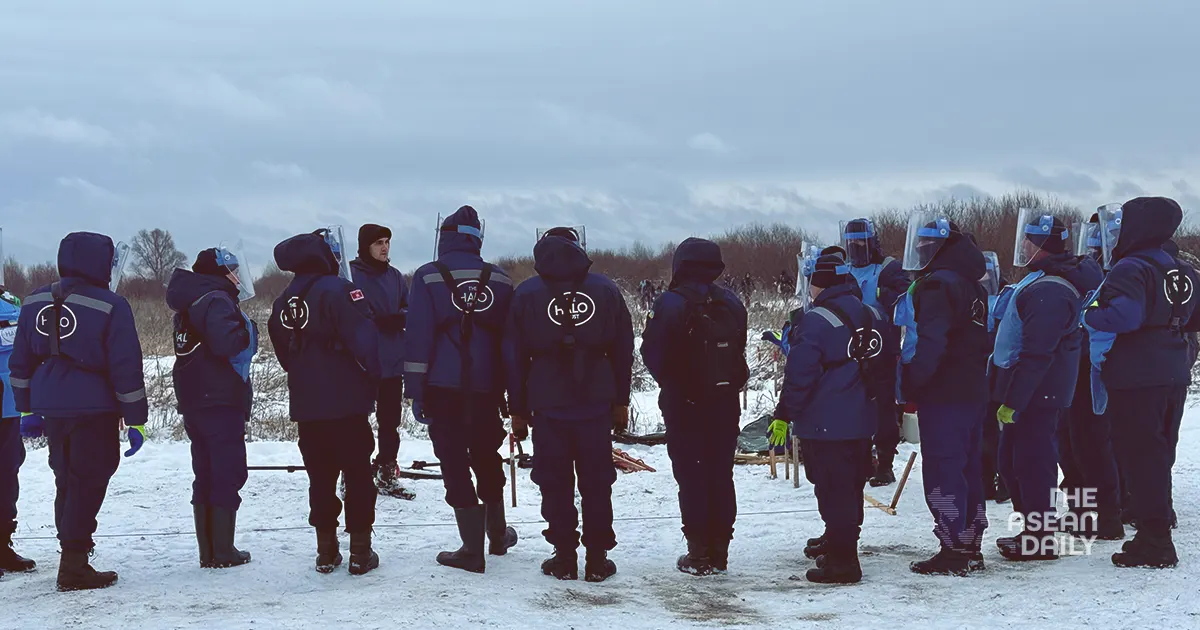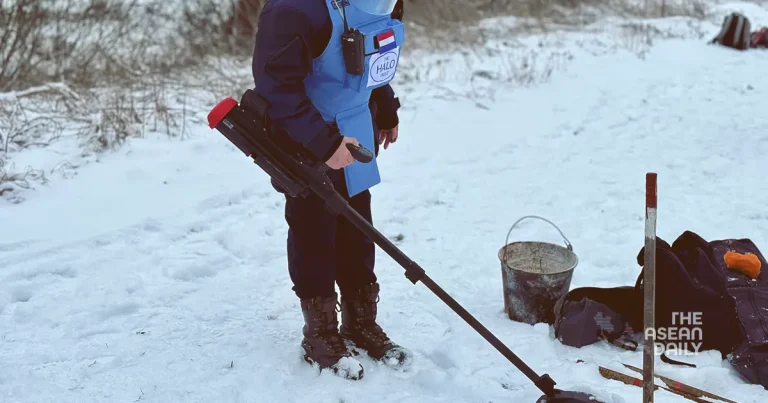9-7-2024 (LONDON) The HALO Trust, the world’s largest humanitarian landmine clearance organisation, is set to harness the power of artificial intelligence (AI) and machine learning in its operations in Ukraine. This groundbreaking initiative comes as part of a $4 million support package from Amazon Web Services (AWS).
The substantial investment will enable HALO to trial AI technology in detecting war debris, including landmines and other explosive remnants, in drone imagery of existing minefields and battlefields across Ukraine. Additionally, the funding will facilitate the automation of satellite imagery analysis to identify buildings damaged by explosives and signs of human activity near conflict zones, allowing HALO to prioritise areas for clearance more effectively.

James Cowan, CEO of HALO Trust, expressed enthusiasm about the collaboration: “This partnership with AWS will revolutionise our life-saving work. By leveraging their technological expertise and computing power, we can more efficiently identify and clear contaminated land. The support will also transform how we manage the vast quantity of real-time data collected from our global operations, including active warzones like Ukraine.”
The scale of the challenge is immense. To date, HALO has conducted 542 drone flights over Ukrainian minefields, amassing a staggering 11 terabytes of data – equivalent to more than 10,000 copies of the Encyclopedia Britannica. This volume continues to grow daily, with the AI pilot project expected to commence drone imagery analysis in the coming months.
Satellite and drone imagery play a crucial role in HALO’s operations, allowing the organisation to survey extensive areas of land efficiently. This enables HALO’s 11,000-strong global workforce to pinpoint areas requiring meticulous clearance, either by hand or machine. The process of training AI to identify explosive remnants of war (ERW) is complex, requiring the manual labelling of thousands of images to teach algorithms to survey minefields more efficiently than human operators.

Dave Levy, Vice President for Worldwide Public Sector at AWS, commented on the initiative: “We’re thrilled to support the HALO Trust in their vital work clearing landmines and other explosive devices left behind by conflicts worldwide. AI has enormous potential to address major global challenges, and we’re eager to work with HALO to harness the power of satellite and drone imagery to accelerate the clearing process.”
The AWS support package extends beyond AI implementation. It includes credits enabling HALO to leverage AWS cloud computing infrastructure globally and train staff in its optimal use. This is particularly crucial for HALO’s 1,200 field data collectors across 30 countries and territories, who need to upload and securely store vast quantities of data daily, often from remote locations with limited connectivity.
AWS is now powering HALO’s Global Operations Information Management System, Geographic Information Systems, drone and satellite imagery processing, and AI and machine learning models. The cloud infrastructure is also being used to run AI and machine learning algorithms on satellite imagery for identifying damaged buildings, power HALO’s open-source mapping project in Ukraine, and host the organisation’s suite of business intelligence tools.
This innovative application of technology in humanitarian demining efforts represents a significant step forward in making conflict-affected areas safer and returning land to productive use.




